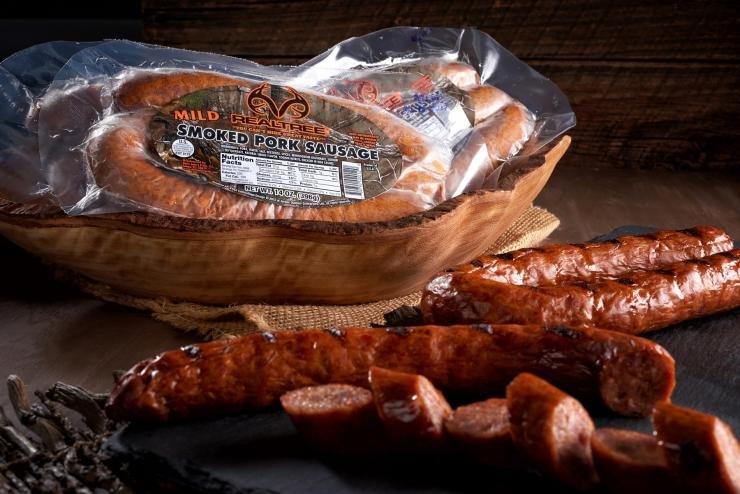Did You Already Know the Answers to These Questions?
Doe management is a major part of deer hunting. The world we live in is much different than it was 30, 20, even 10 years ago. And as coyotes and other predators continue to become an ever-increasing factor, analyzing doe harvests will become even more important.
That's why we teamed up with Quality Deer Management Association Biologists Kip Adams and Matt Ross to get the inside scoop on Doe Management 101.
1. How Can You Determine the Number of Does to Remove from Your Property?
Many state wildlife agency population models suggest harvesting 20 to 30 percent of the adult does (1½ year olds) will stabilize the deer herd, Adams said. If you want to grow the herd, shoot less. If you want to reduce the herd, shoot more than 20 to 30 percent of them. The best way to estimate the number of does on a property is to conduct a trail camera survey. You can also pay attention to the habitat. Are your food plots eaten to the ground? Is there a browse line in the woods? If so, that suggests there are more deer than food available; so shoot more does than you did last year.
Don't Miss: QDM Cooperatives: The Future of Deer Management on Small Properties
2. Is Early Season or Late Season the Best Time for Doe Harvests Where You Hunt?
I'm a big fan of early season doe harvests because at that time you have the greatest size difference between adults and fawns, Adams said. If you start early, you're more likely to reach your doe harvest goal, the food the harvested does would have eaten is now available to other deer, and my personal favorite reason is I like to have my target doe harvest completed before the rut so I can spend the entire rest of deer season focused on hunting bucks.
3. What Age Class of Does Should You Harvest?

Don't Miss: The Antlerless Dilemma
4. What Are the Best Ways to Help Identify Button Bucks?
Button bucks have flat heads while doe fawns and adult does have rounded heads, Adams said. Button bucks are often the first deer to enter a field. Fawns (bucks and does) have square bodies while adult does have more rectangular bodies. If you see a fawn's head from the side, its eye is about midway between its forehead and nose, while the distance from the eye to nose on an adult doe is much greater than the distance from the eye to its forehead.
5. What Are the Best, Most Practical Changes You Can Make On a Property to Improve Overall Health of the Deer Herd?
The first thing the average hunter should do to his or her property to positively impact the overall health of the deer herd is to make sure there aren't too many deer to begin with, Ross said. That's trigger management, by deciding how many and which deer to kill. If you have too many, then focus on removing between 20 to 30 percent of the adult does on your place. That will start tipping things in the right direction. The second improvement is straight-up habitat management. Start with managing your woods to get some sunlight on the ground, then be sure to provide a decent proportion of the surrounding landscape in young forests and brushy areas (like CRP ground, unmaintained power lines, old pastures, etc.). Finally, look at strategically installing food plots for boosting the nutritional plane for deer and for aiding in your harvest success.
Don't Miss: How to Be the Best Meat Hunter
6. How Can Someone Who's On a Budget Improve the Habitat to Increase Deer Density?
Partner Highlight: Team Realtree Jalapeno Smoked Pork Baby Link Sausage
Hire a forester, Ross said. Most lands that folks have access to for white-tailed deer hunting have some trees on it (unless you're from the Great Plains or Southwest). Getting sunlight on the ground within your forest will make the largest impact for the least amount of money. Regarding budget-friendly techniques, even an untrained person with a $300 chainsaw and a couple of gallons of gas can make a large impact. However, my advice is to go with the professional guidance of a forester because they can make sure you meet your goals the fastest, and if there is enough mature timber in your woods, you could potentially even get paid for this kind of work in the end.
7. If Planting or Allowing Something to Grow/Thicken Up, What Provides the Best Fawning Cover for Whitetails?
The best fawning cover is a spot that provides a lot of vertical structure — the kind where it's nearly impossible to see more than 5 yards or so and is very difficult to walk through, Ross said. Look for areas comprised of a good mix of saplings, grasses and forbs — the more thorns the better. You can find this in fields or pastures that have been let go for a number of years. However, instead of having one location on your property like this, it's best to have several since fawning season is the only time of year when deer become truly territorial, as does will separate from their main family group to give birth and rear their fawns for those first crucial days of life. You want it to have a lot of interior as well, so aim for creating fawning areas that are circular or square in shape to avoid predators working the edges.
Don't Miss: 7 Ways to Practice Quality Deer Management
Are you a deer hunter wanting to learn how to accomplish your goals? Check out our stories, videos and hard-hitting how-to's on deer hunting.







